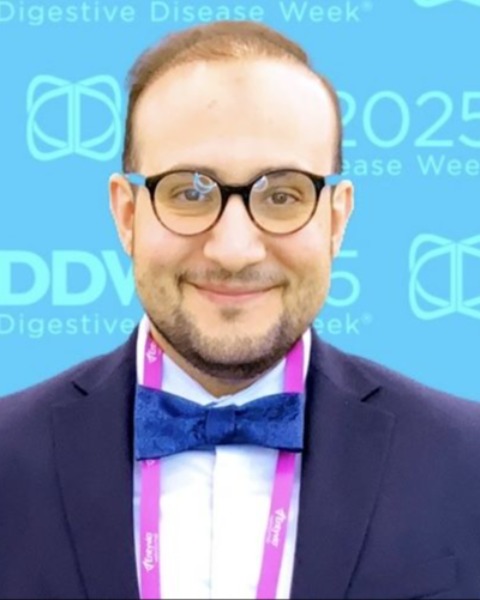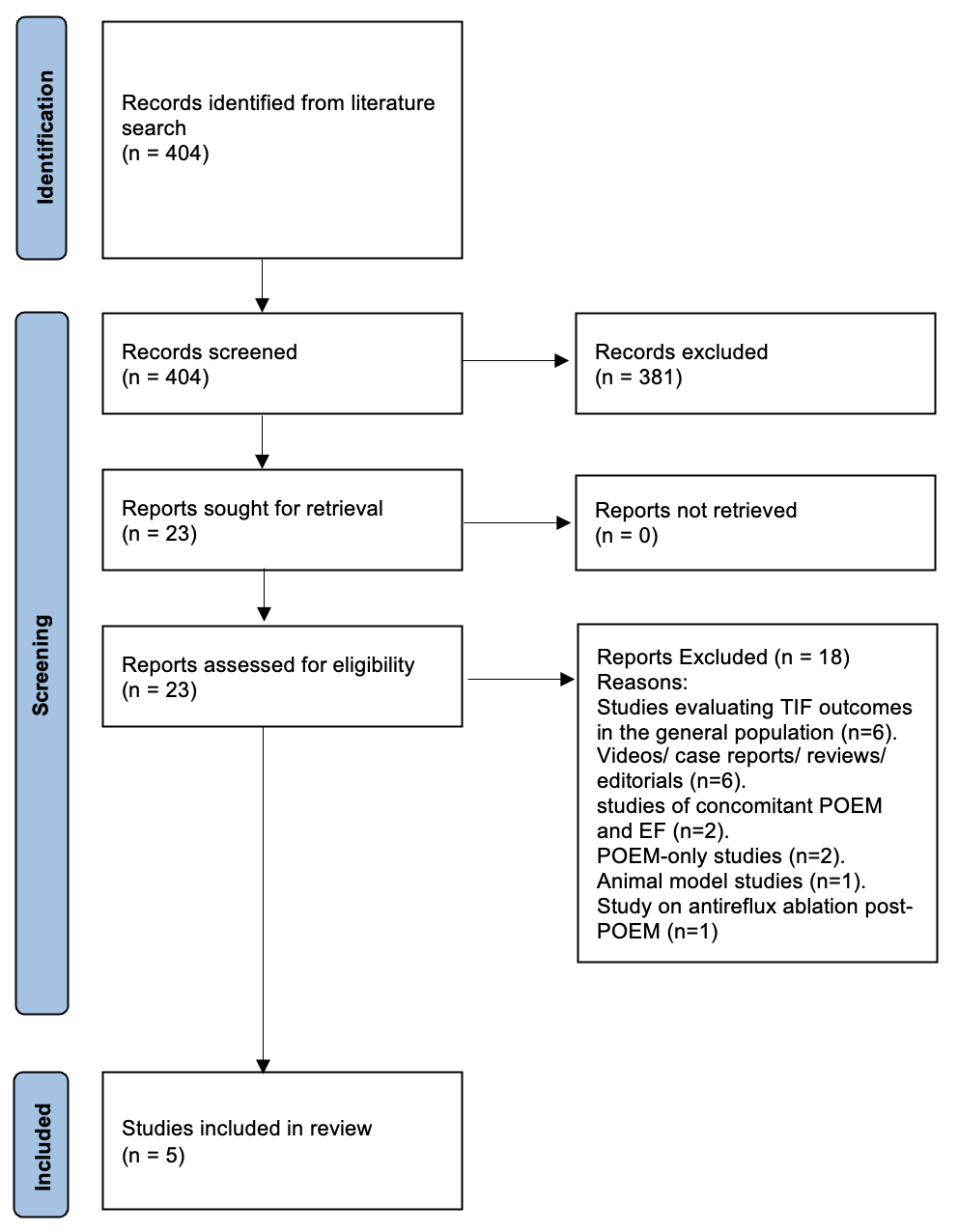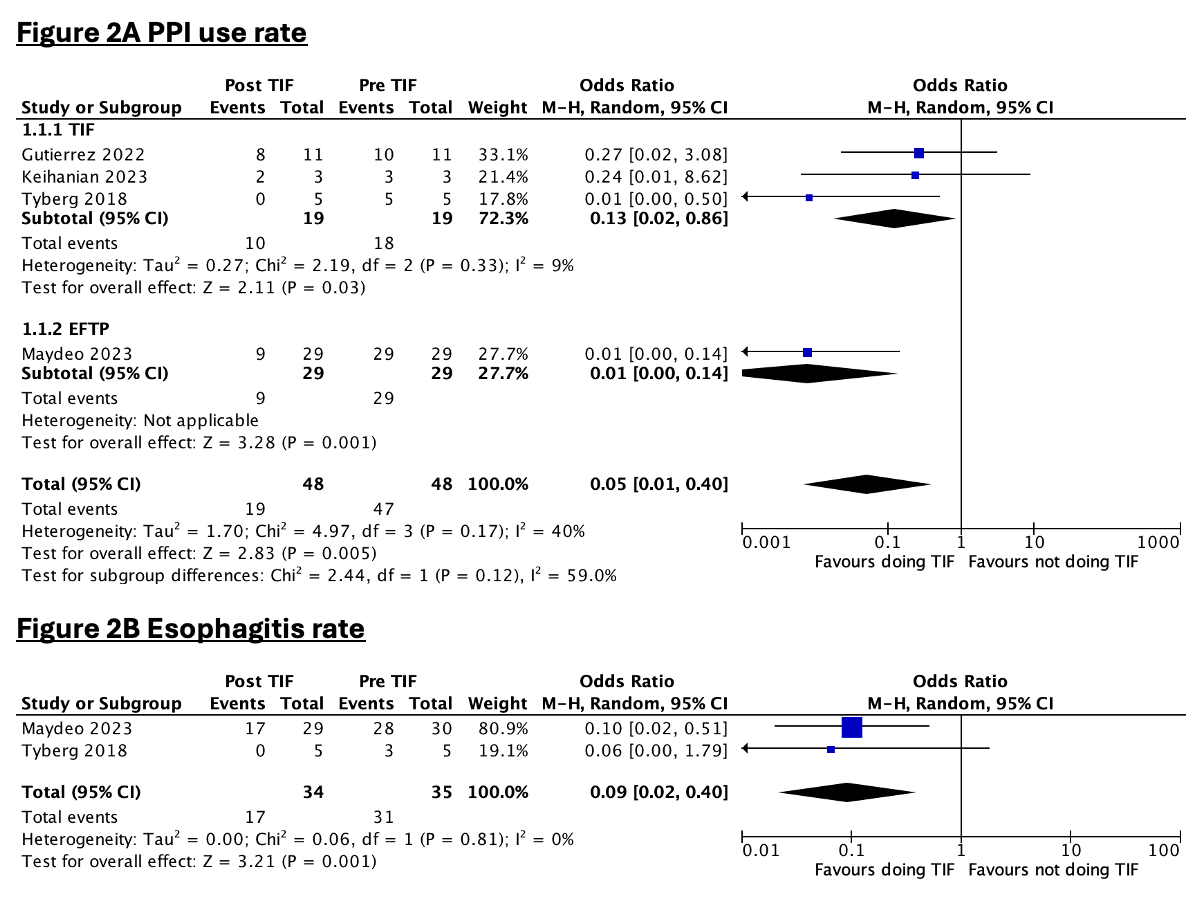Tuesday Poster Session
Category: Interventional Endoscopy
P5649 - GERD Following POEM: Is Endoscopic Fundoplication the Answer? A Meta-Analysis
Tuesday, October 28, 2025
10:30 AM - 4:00 PM PDT
Location: Exhibit Hall

Abdul-Rahman Fadi Diab, MD
University of Central Florida College of Medicine / HCA Healthcare GME Consortium and University of South Florida Morsani College of Medicine
Ocala, FL
Presenting Author(s)
Abdul-Rahman Fadi. Diab, MD1, Hind El Naamani, MD2, Mehak Sachdeva, MBBS3, Madhu Adusmilli, MD3, Salvatore Docimo, DO4, Joseph Sujka, MD4, Christopher DuCoin, MD4
1University of Central Florida College of Medicine / HCA Healthcare GME Consortium and University of South Florida Morsani College of Medicine, Ocala, FL; 2Boston Medical Center – Brighton, Boston, MA; 3University of Central Florida HCA Healthcare GME, Ocala, FL; 4University of South Florida Morsani College of Medicine, Tampa, FL
Introduction: Endoscopic fundoplication (EF) has emerged as a therapeutic option for gastroesophageal reflux disease (GERD), with well-established safety and efficacy. Techniques include transoral incisionless fundoplication (TIF) and endoscopic full-thickness fundoplication (EFTP). GERD is a common and well-documented adverse event following peroral endoscopic myotomy (POEM). While EF is supported by robust data in the general GERD population, its safety and efficacy in the post-POEM setting remain unclear. This study aims to conduct a meta-analysis evaluating the safety and efficacy of EF in managing GERD following POEM.
Methods: A systematic literature review was conducted in accordance with PRISMA guidelines to identify studies evaluating the safety and efficacy of EF after POEM. Keywords included: POEM, GERD, fundoplication, following, after, and postoperative. In the meta-analysis, a random-effects model was employed, and odds ratios (ORs) were calculated for dichotomous outcomes.
Results: The initial search yielded 404 records, of which 381 were excluded as clearly irrelevant. The remaining 23 articles underwent full-text review, with 18 excluded for specific reasons: Studies evaluating TIF outcomes in the general population (n=6), videos/case reports/reviews/editorials (n=6), studies of concomitant POEM and EF (n=2), POEM-only studies (n=2), animal model studies (n=1), and one study on antireflux ablation post-POEM (n=1). A significant reduction in proton pump inhibitor (PPI) use was observed following EF (OR 0.05, 95% CI 0.01–0.40, p=0.005; I²=40%, p=0.17). Subgroup analysis by technique (TIF vs. EFTP) showed no significant differences (p=0.12). EF was also associated with a significant reduction in esophagitis rates (OR 0.09, 95% CI 0.02–0.40, p=0.001; I²=0%, p=0.81). The pooled adverse event rate was 11.9%, and the technical success rate was 100%.
Discussion: Current data on EF for GERD following POEM remain limited. Preliminary evidence suggests that EF is a safe and effective intervention in this setting. However, definitive conclusions cannot yet be drawn. Further studies with larger cohorts are warranted. In particular, randomized controlled trials comparing EF with surgical fundoplication post-POEM, as well as studies evaluating concomitant EF at the time of POEM, are needed to better define the optimal management strategy.

Figure: Figure 1: PRISMA

Figure: Figure 2: PPI use rate (A) and esophagitis rate (B)
Disclosures:
Abdul-Rahman Diab indicated no relevant financial relationships.
Hind El Naamani indicated no relevant financial relationships.
Mehak Sachdeva indicated no relevant financial relationships.
Madhu Adusmilli indicated no relevant financial relationships.
Salvatore Docimo indicated no relevant financial relationships.
Joseph Sujka indicated no relevant financial relationships.
Christopher DuCoin indicated no relevant financial relationships.
Abdul-Rahman Fadi. Diab, MD1, Hind El Naamani, MD2, Mehak Sachdeva, MBBS3, Madhu Adusmilli, MD3, Salvatore Docimo, DO4, Joseph Sujka, MD4, Christopher DuCoin, MD4. P5649 - GERD Following POEM: Is Endoscopic Fundoplication the Answer? A Meta-Analysis, ACG 2025 Annual Scientific Meeting Abstracts. Phoenix, AZ: American College of Gastroenterology.
1University of Central Florida College of Medicine / HCA Healthcare GME Consortium and University of South Florida Morsani College of Medicine, Ocala, FL; 2Boston Medical Center – Brighton, Boston, MA; 3University of Central Florida HCA Healthcare GME, Ocala, FL; 4University of South Florida Morsani College of Medicine, Tampa, FL
Introduction: Endoscopic fundoplication (EF) has emerged as a therapeutic option for gastroesophageal reflux disease (GERD), with well-established safety and efficacy. Techniques include transoral incisionless fundoplication (TIF) and endoscopic full-thickness fundoplication (EFTP). GERD is a common and well-documented adverse event following peroral endoscopic myotomy (POEM). While EF is supported by robust data in the general GERD population, its safety and efficacy in the post-POEM setting remain unclear. This study aims to conduct a meta-analysis evaluating the safety and efficacy of EF in managing GERD following POEM.
Methods: A systematic literature review was conducted in accordance with PRISMA guidelines to identify studies evaluating the safety and efficacy of EF after POEM. Keywords included: POEM, GERD, fundoplication, following, after, and postoperative. In the meta-analysis, a random-effects model was employed, and odds ratios (ORs) were calculated for dichotomous outcomes.
Results: The initial search yielded 404 records, of which 381 were excluded as clearly irrelevant. The remaining 23 articles underwent full-text review, with 18 excluded for specific reasons: Studies evaluating TIF outcomes in the general population (n=6), videos/case reports/reviews/editorials (n=6), studies of concomitant POEM and EF (n=2), POEM-only studies (n=2), animal model studies (n=1), and one study on antireflux ablation post-POEM (n=1). A significant reduction in proton pump inhibitor (PPI) use was observed following EF (OR 0.05, 95% CI 0.01–0.40, p=0.005; I²=40%, p=0.17). Subgroup analysis by technique (TIF vs. EFTP) showed no significant differences (p=0.12). EF was also associated with a significant reduction in esophagitis rates (OR 0.09, 95% CI 0.02–0.40, p=0.001; I²=0%, p=0.81). The pooled adverse event rate was 11.9%, and the technical success rate was 100%.
Discussion: Current data on EF for GERD following POEM remain limited. Preliminary evidence suggests that EF is a safe and effective intervention in this setting. However, definitive conclusions cannot yet be drawn. Further studies with larger cohorts are warranted. In particular, randomized controlled trials comparing EF with surgical fundoplication post-POEM, as well as studies evaluating concomitant EF at the time of POEM, are needed to better define the optimal management strategy.

Figure: Figure 1: PRISMA

Figure: Figure 2: PPI use rate (A) and esophagitis rate (B)
Disclosures:
Abdul-Rahman Diab indicated no relevant financial relationships.
Hind El Naamani indicated no relevant financial relationships.
Mehak Sachdeva indicated no relevant financial relationships.
Madhu Adusmilli indicated no relevant financial relationships.
Salvatore Docimo indicated no relevant financial relationships.
Joseph Sujka indicated no relevant financial relationships.
Christopher DuCoin indicated no relevant financial relationships.
Abdul-Rahman Fadi. Diab, MD1, Hind El Naamani, MD2, Mehak Sachdeva, MBBS3, Madhu Adusmilli, MD3, Salvatore Docimo, DO4, Joseph Sujka, MD4, Christopher DuCoin, MD4. P5649 - GERD Following POEM: Is Endoscopic Fundoplication the Answer? A Meta-Analysis, ACG 2025 Annual Scientific Meeting Abstracts. Phoenix, AZ: American College of Gastroenterology.
